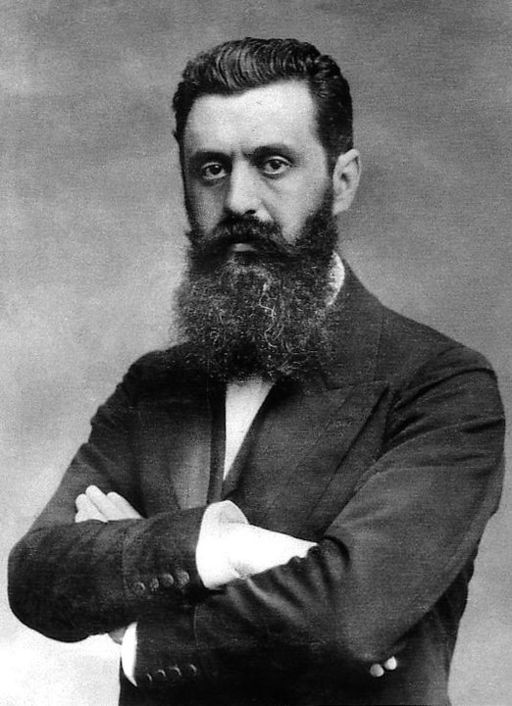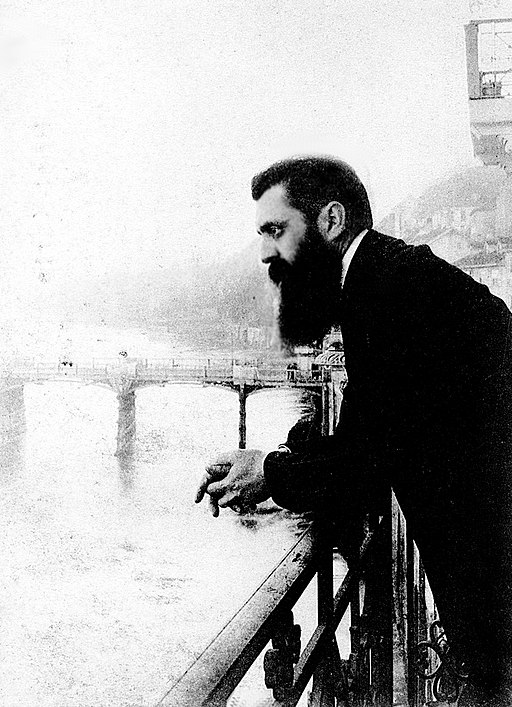Zionism is one of the most influential movements of the 20th century.
What is Zionism? How did it start? Why was it needed? And who is Theodor Herzl?
Hang tight, as you will soon find out!
As you remember, we left off at the disastrous aftermath of the Bar Kokhba revolt, in 136 CE.
In the next 1700 years, the Land of Israel is being conquered again and again – Roman rule is followed by centuries of domination by successive foreign powers: Byzantine (313 CE-636 CE), Arab (636 CE-1099 CE), Crusaders (1099 CE-1291 CE), Mamluk (1291 CE-1516 CE), Ottoman (1517 CE-1917 CE) and British (1918 CE-1948 CE).
Each of the foreign powers give the Jewish people that remained in the Land of Israel different degrees of freedom and rights. Mostly, though, these degrees are on the lower side of the scale…

In the final chapter of our story, we will fast forward through time, from 136 CE to 1860 CE.
Why? Since this is where the magic happens.
The 19th century sees first signs of progress, with various Western powers aspiring for position in the Land of Israel, often through missionary activities.
British, French, and American scholars launch studies of biblical archeology; Britain, France, Russia, Austria, and the United States open consulates in Jerusalem. Steamships have regular routes to and from Europe; postal and telegraphic connections are installed; the first road connecting Jerusalem and Jaffa is built.
The Land’s rebirth as a crossroads for commerce of three continents is accelerated by the opening of the Suez Canal.
And as the state of the Land improves, so does the state of the Jews. They return to Jerusalem in numbers, and by mid-century, overcrowded conditions within the walled city of Jerusalem motivates the Jews to build the first neighborhood outside the walls (1860 CE)!
Isn’t it amazing? 1700 years after being forced out of Jerusalem, now there are so many Jews in Jerusalem that the city can’t hold them!
And fortunes continue to smile upon the Jews in the Land of Israel, as in the next 25 years new neighborhoods are added – seven of them. In fact, By 1870, Jerusalem has an overall Jewish majority for the first time since the Bar Kokhba revolt.
Not only that, land for farming is purchased throughout the country; new rural settlements are established; and the Hebrew language, long restricted to liturgy and literature, is revived.
King David must be so proud.
But Why am I telling you all this?
First of all, it’s nice to read something good happening to the Jews of Israel after the last chapters.
Second, because this momentum sets the stage for the next phase – Zionism. As in the title of the chapter.
What is the “Zion” in Zionism?
Zion is a place name in the Hebrew Bible used as a synonym for Jerusalem as well as for the Land of Israel as a whole.
So you can already guess that Zionism has something to do with Jews and the Land of Israel…
Cool. And what is Zionism?
Zionism is the nationalist movement of the Jewish people that support the re-establishment of a Jewish state in the territory defined as the historic Land of Israel (roughly corresponding to Canaan, the Holy Land).
Simply put, Zionism is the national liberation movement of the Jewish people. It is also the idea that the only way for Jews to be safe is if they had their own state in their historic homeland.
But why would the Jews want to return to Israel? Why are they not safe where they are?
As you remember, most of the Jews are scattered all over the world after the Bar Kokhba revolt.
And as you may have noticed, non-Jewish people tend to oppress the Jewish people. Political Zionism emerges in response to continued oppression and persecution of Jews in Eastern Europe, and plain old discrimination in Western Europe, were Jews are excluded from the local societies.

How did Zionism turn into a movement? Who took the lead? Who assembles the Jews? Who is this hero?
His name is Herzl. Theodor Herzl. Theodor Binyamin Ze’ev Herzl. Or Teddy, if you know him like really well.
Theodor Herzl, the visionary of Zionism, was born in Budapest in 1860 CE (See? I told you that 1860 is important!).
Like many Jews, Theodor Herzl encounters anti-Semitism wherever he goes, both in Austria and France (despite having a doctorate in law).
Herzl concludes that anti-Semitism is a stable and immutable factor in human society, which cultural assimilation just cannot solve.
A thought comes to his mind – what if the Jews had sovereignty, like in the good ol’ days of King David and King Solomon?
He is hyped. “It’s brilliant, I’ve got to spread the word!”. And, as happens to all the great visionaries, he encounters ridicule from Jewish leaders.
Does he give up? No, he does not.
He pushes on and publishes Der Judenstaat (The Jewish State, 1896). Herzl argues that the essence of the Jewish problem is not individual but national. He declares that the Jews could gain acceptance in the world only if they ceased being a national anomaly.
As Herzl sees it, the Jews are one people, and their plight could be transformed into a positive force by the establishment of a Jewish state with the consent of the great powers. He sees the Jewish question as an international political question to be dealt with in the arena of international politics.
Truly a visionary man, isn’t he?
What happens with this vision? Does it become a reality?
Maybe! Why? Because the answer is in the second part of our last chapter – Z is for Zionism (Part 2)!

